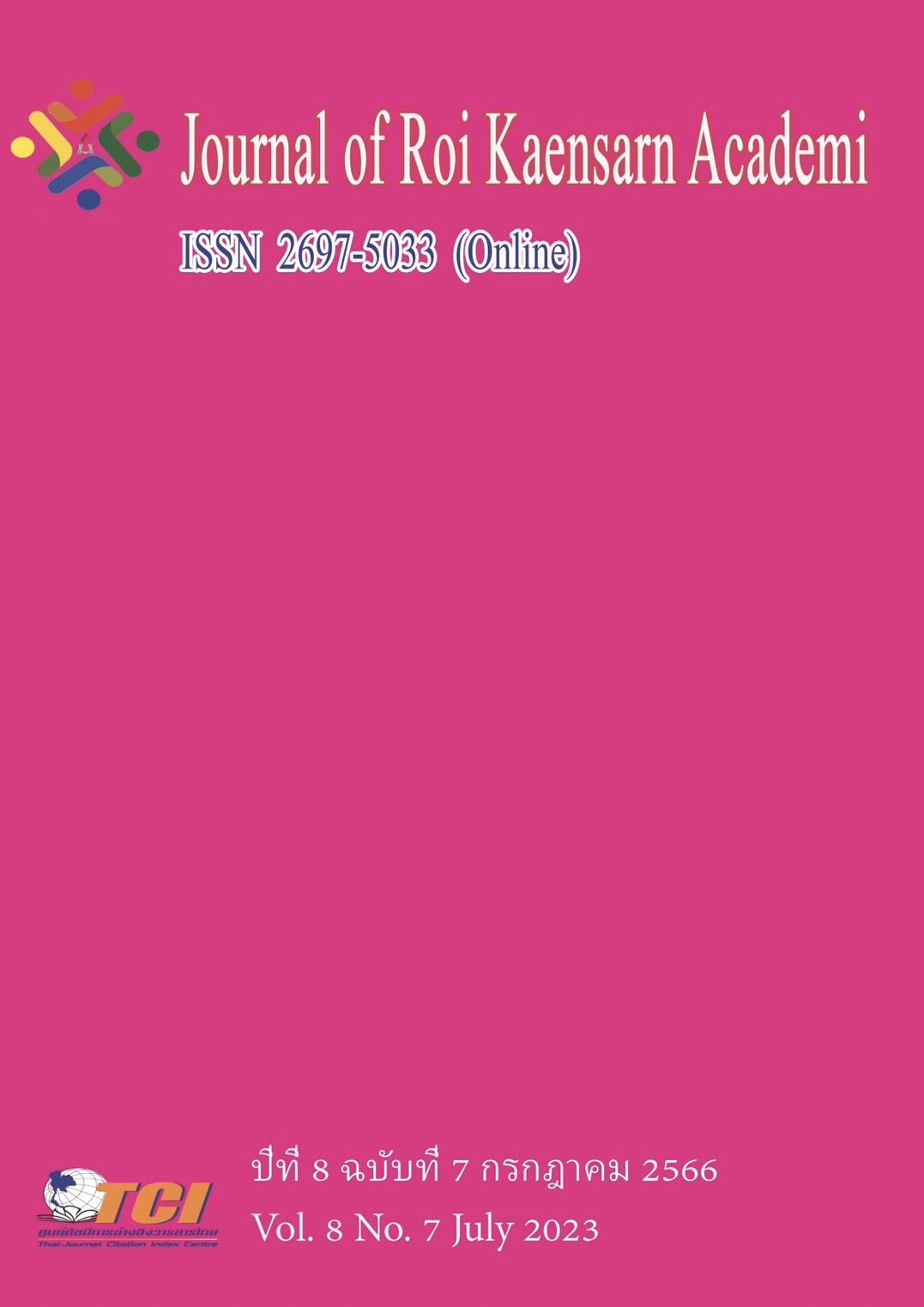The Learning Management Through the Direct Instruction Model to Improve Vocal Music Skills for Secondary 5 (Grade 11)Students
Main Article Content
บทคัดย่อ
The objectives of this research were to: 1) compare the vocal music skills of Secondary 5 (Grade 11) students before and after learning management through the traditional method, 2) compare the vocal music skills of students before and after learning management through direct instruction model, and 3) compare the vocal music skills of students between those studying through the traditional method and those studying through the direct instruction model. The research sample was 30 Secondary 5 (Grade 11) students, selected by cluster random sampling, of Beijing Modern Music School, Beijing, China, in the academic year 2023. The research instruments consisted of: 1) a learning management plan using the traditional method, 2) a learning management plan using the direct instruction model, and 3) an assessment form of vocal music skills. The statistics used for data analysis were mean, standard deviation, independent samples t-test, and dependent samples t-test. The research results showed that: 1) the vocal music skills of Secondary 5 (Grade 11) after studying through the traditional method were higher than before at the statistical significance level of .05, 2) the vocal music skills of students after studying through the direct instruction model were higher than the before at the statistical significance level of .05., and 3) the vocal music skills of students studying through direct instruction model were higher than those studying through the traditional method at the statistical significance level of .05.
Article Details
เอกสารอ้างอิง
Anderson, T. (2017). Three Pillars of Educational Technology: Learning Management Systems, Social Media, and Personal Learning Environments. The International Review of Research in Open and Distributed Learning. 18 (3), 1-13.
Kousar, R. (2009). Effects of Direct Teaching Mode on Intermediate Grades and Attitudes to English Grammar. Journal of College Teaching and Learning. 7 (2), 275-295.
Lowe, G., & Belcher, S. (2012). Direct instruction and music literacy: one approach to augmenting the diminishing. Australian Journal of Music Education. (1), 3-13.
Lu, S. (2010). On the difference between skill teaching method and image teaching method in vocal music teaching. Music and Dance, 128.
Peng, Z. (2018). The Instrumental and Domain, Emancipatory Educational Significance of Critical Thinking. Journal of Arts and Humanities. 7 (8), 180-188.
Sheng, Q. (2005). The model of direct guidance in learning and teaching. In 12 lectures on the model of learning and teaching. 12 lectures on the model of learning and teaching. 42-44.
Song, Z. (2021). Research on the strategy of college piano infiltrating music aesthetic education factors under the background of information age. House of Drama. 13, 92-93.
Yang, S., &Mao, X., &Zhao, Y., &Zhang, R., et al. (2023). Comparative study of the "6+1" model and traditional model of effective physical education option course. School Physical Education. 46-48.
Yu, S. (2013). On direct teaching. Studies in Foreign Education. 40 (281), 4.
Zeng, Q. (2020). Let the vocal learning of high school students move from abstract to concrete. Secondary School Teaching Reference, Comprehensive Edition. 18-19.
Zhang, G. (2021). Breaking the traditional teaching concept and innovating the junior high school music teaching model. Science Fiction Pictorial. 270-271.
Zhang, Z., & Wang, R. (2015). On the principle of step-by-step teaching. New West: Teaching Reform, 4.
Zhong, Y. (2013). Leveraging the advantages of direct teaching and improving teaching effectiveness. Curriculum Education Research. 1-2.

